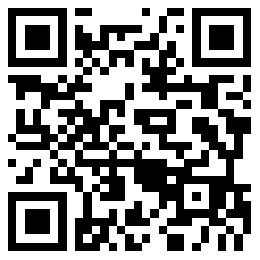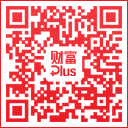改變習(xí)慣的秘密

|
????夏天來(lái)了。到目前為止,,你可能已經(jīng)放棄了自己的新年計(jì)劃,,或者是成功地將其融入到日常工作和生活之中。 ????如果是前者,,那么你就非常幸運(yùn)?,F(xiàn)在正是培養(yǎng)新習(xí)慣,改掉舊習(xí)慣的絕佳時(shí)機(jī),。原因在于,,改變習(xí)慣的重要因素與季節(jié)無(wú)關(guān)。此外,,未能成功改變習(xí)慣的過(guò)往經(jīng)歷,,也可以讓你獲得關(guān)鍵信息,確保下一次嘗試取得成功,。 ????開(kāi)始改變之前,,首先要經(jīng)歷社會(huì)科學(xué)家們所稱(chēng)的“懵懂期”,即認(rèn)真思考當(dāng)前狀況的利弊,,你為什么堅(jiān)持當(dāng)前的壞習(xí)慣,,改變能夠帶來(lái)哪些好處。這種思考可以幫助你發(fā)現(xiàn)可能阻礙你改變的因素,。 ????著有《心靈健身房:求異思維為你帶來(lái)更多》(Mind-Gym: Achieve More by Thinking Differently)一書(shū)的紐約作家塞巴斯蒂安?貝利表示:“人們之所以失敗,,往往是由于他們直接進(jìn)入‘深思階段’——反思自己的個(gè)人信念和能力,開(kāi)始想:‘我可以做這個(gè),,我可以換工作,,我可以更新簡(jiǎn)歷?!麄儾](méi)有充分認(rèn)識(shí)現(xiàn)狀,,以及繼續(xù)當(dāng)前行為的后果?!?/p> ????如果你在下定決心做出改變時(shí),,有足夠的時(shí)間進(jìn)行規(guī)劃,而不是在每年一月一日這個(gè)最終期限的驅(qū)使下,,沖動(dòng)地做出決定,,你便可以為將來(lái)可能遇到的障礙做出更充分的準(zhǔn)備,。假如你決定在工作時(shí)遠(yuǎn)離Facebook,只要你知道有哪些問(wèn)題會(huì)妨礙你實(shí)現(xiàn)這個(gè)目標(biāo),,你就可以精心制定一個(gè)計(jì)劃,,在未來(lái)避開(kāi)這些問(wèn)題。這便是改變習(xí)慣的第三個(gè)階段,,即貝利所說(shuō)的“準(zhǔn)備階段”,。 ????在《習(xí)慣的力量》(The Power of Habit)一書(shū)中,記者查爾斯?杜希格將習(xí)慣解釋為一組提示我們按某種方式行事的觸發(fā)點(diǎn)或信號(hào),,以及一種讓我們通過(guò)堅(jiān)持這種習(xí)慣最終獲得回報(bào)的慣例,。如果我們有吃下午點(diǎn)心的習(xí)慣,信號(hào)可能是看到同事去自助餐廳,,隨后便形成了與他一起吃意式脆餅和咖啡的慣例,,我們得到的回報(bào)是咖啡因和甜味刺激。 ????一旦形成了某種習(xí)慣,,我們便無(wú)法清除與這種習(xí)慣相關(guān)的大腦神經(jīng)通路,;我們只能通過(guò)培養(yǎng)新的習(xí)慣取而代之。重要的是仔細(xì)審查你的習(xí)慣,,了解這種習(xí)慣背后的動(dòng)機(jī),;例如,你真的喜歡糖果和咖啡因帶來(lái)的刺激嗎,?或者,你只是希望在下午短暫的休息時(shí)間拓展人脈,?這種思考可以為你的改變提供有力的工具,。 ????如果你在上班無(wú)聊的時(shí)候習(xí)慣查看微博,可以嘗試做幾個(gè)俯臥撐,、散步,、與同事聊天、閱讀一些期刊文章,,或玩填字游戲,,來(lái)代替這種習(xí)慣。只要這種活動(dòng)能夠分散你對(duì)微博的注意力,,它便可以最有效的解決對(duì)社交媒體上癮的問(wèn)題,。杜希格表示,有效的活動(dòng)是可以?shī)A在信號(hào)與回報(bào)之間的最佳新慣例,。 ????在開(kāi)始改變一種習(xí)慣之前,,貝利建議拿出時(shí)間,完成“懵懂期”,、“沉思期”和“準(zhǔn)備期”這三個(gè)階段,。認(rèn)真想想自己需要做出什么樣的改變,。你可能會(huì)發(fā)現(xiàn),更小幅度的變化或許才是最佳選擇,。貝利回憶稱(chēng),,有一位女士迫切想在另外一家公司找到一份工作,但當(dāng)她開(kāi)始挖掘這種想法背后的動(dòng)機(jī)時(shí),,她意識(shí)到自己只是對(duì)目前的職位感到厭煩,。如果她在一家不同公司找一份類(lèi)似的工作,她還是不會(huì)高興,。因此,,這位女士進(jìn)行了一次橫向調(diào)動(dòng),獲得了更高的工作滿(mǎn)意度,,既沒(méi)有遭受職業(yè)空白期,,也沒(méi)有給雇主造成破壞性變化。 ????你需要激發(fā)自身的情緒,,找出迫使你做出改變的最強(qiáng)烈的動(dòng)機(jī),。在辦公室墻上的視覺(jué)提醒,可以幫助你堅(jiān)持自己的目標(biāo),。要想方設(shè)法讓自己相信,,你可以改變。 ????貝利說(shuō)道:“要改變個(gè)人行為,,你必須了解問(wèn)題和與之相關(guān)的情緒,。如果人們對(duì)問(wèn)題的感受足夠強(qiáng)烈,他們就會(huì)想辦法去解決它,?!?/p> |
????It’s summer. By now, you’ve either broken your New Year’s resolutions or successfully integrated them into your routines. ????If you’re in the former group, you’re in luck. This is actually a terrific time to create new habits or to shed old ones. That’s because the important elements of habit change aren’t tied to a season. Moreover, the experience of failing to change can actually give you crucial information that will ensure victory the next time around. ????For one, it’s important to begin the change process with what social scientists call “pre-contemplation,” or really thinking through the pros and cons of your current situation, what is keeping you in the bad habit, and what would be the benefit of changing. Such thinking helps make you aware of factors that might hold you back. ????“People tend to fail because they start directly in the contemplating phase—they rethink their personal beliefs, capabilities, they start thinking, ‘I can do this, I can change jobs, I can update my resume.’ But what they haven’t done is become fully aware of the current situation and the consequences of continuing with what you’re doing,” says Sebastian Bailey, New York-area author of Mind-Gym: Achieve More by Thinking Differently. ????Indeed, if you resolve to change your behavior at a time of year when you have time to plan—as opposed to when the Jan. 1 deadline encourages you to impulsively make resolutions—you’ll be better prepared to handle bumps in the road. When you know what made you falter in your resolve to stay off Facebook at work, for instance, you can craft a plan to sidestep that problem in the future. This is part of the third stage of habit change, which is preparation, according to Bailey. ????In The Power of Habit, journalist Charles Duhigg explains habits as a combination of a trigger or cue that prompts us to act in a certain way, followed by a routine that culminates in a reward we receive from engaging in that habit. For example, if we have a habit of eating an afternoon snack, the cue may be seeing a colleague headed for the cafeteria, followed by the routine of joining him for biscotti and coffee, which give us the reward of a caffeine and sugar rush. ????Once a habit has been established, the neural pathways in our brain associated with that habit cannot be eliminated; we can only form new ones by replacing the habit with a new routine. It’s important to examine your habits to understand what your motivation is; for instance, do you actually like that sugar and caffeine jolt? Or are you seeking social connection during the afternoon lull? That insight will give you the tools to change your habits. ????If you have a habit of checking Twitter when you’re bored at work, try instead to do a quick set of pushups, go for a walk, chat with a neighbor, read a stack of piled-up journal articles, or do a crossword puzzle. Whichever of these activities helps distract you from Twitter is most closely addressing the need you’re trying to meet with a social media fix. The winning activity is the best candidate for a new routine that can be sandwiched between the cue and the reward, according to Duhigg. ????Before you leap into habit change, Bailey recommends taking your time in the pre-contemplation, contemplation, and preparation stages. Think through what you need to do differently. You may discover that a smaller change is best. Bailey says he remembers a woman who was dying to find a job t another company, but when she started to explore her motivations, she realized she was simply bored with her role. If she took a similar job with a different employer, she would likely be just as dissatisfied. Instead, that woman made a lateral move and found greater job satisfaction without losing tenure or making a disruptive change of employer. ????You need to arouse your emotions and connect to the strongest motivation you have to change. Perhaps a visual reminder on your office wall will help you stick to your goal. Find a way to believe that you can change. ????“For personal change, it’s about understanding the problem and understanding the emotions around it. If people feel the problem strongly enough, they’ll do anything to solve it,” Bailey says. |
-
熱讀文章
-
熱門(mén)視頻











